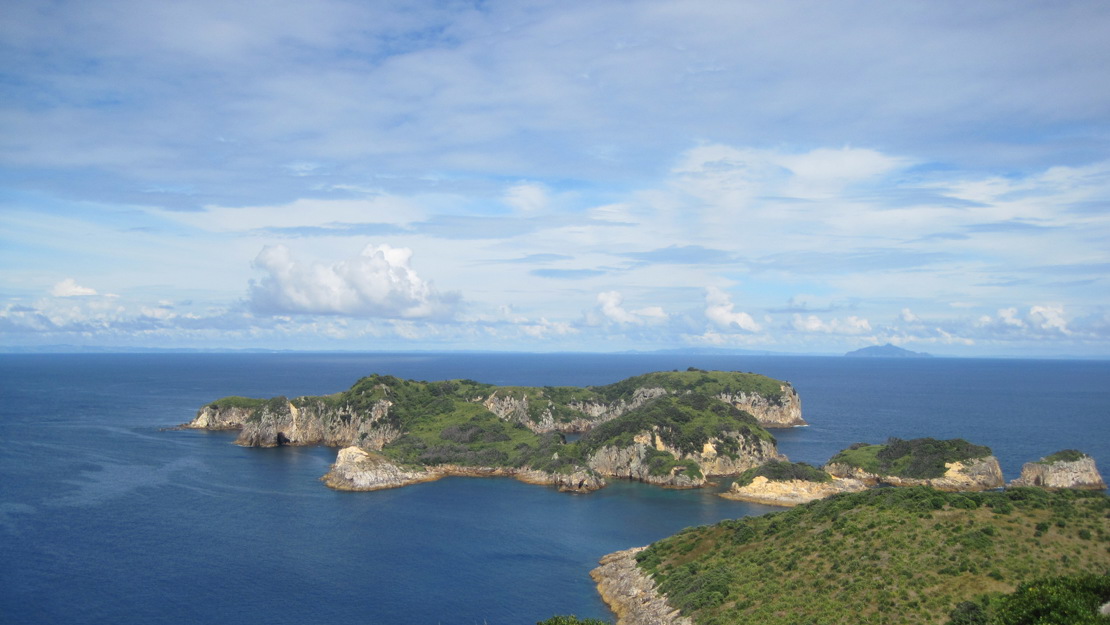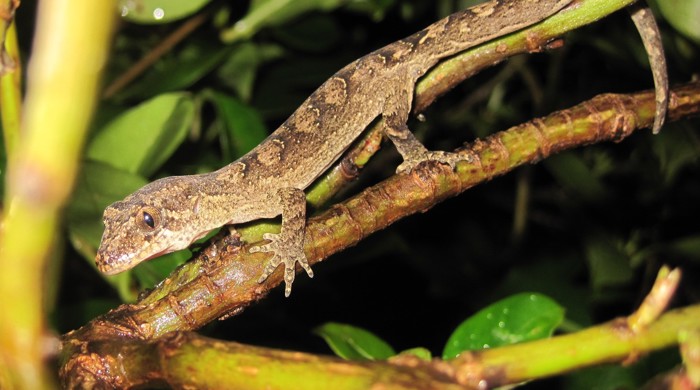Mokohīnau Islands
The Mokohīnau Islands have the best remaining examples of petrel scrub in the region. This ecosystem is induced by the presence of large numbers of seabirds.
Size: 153 hectares
Area description
The Mokohīnau Islands are an isolated cluster of small pest-free islands, islets and rock stacks. The islands are approximately 22km north-east of Aotea / Great Barrier Island and administered by the Department of Conservation.
Pokohinu / Burgess Island, the northernmost island, is 50 hectares in size. Most of the island is a scenic reserve and open to the public. The rest of the islands and small rock stacks, including Fanal, Flax and Trig islands, are nature reserves and protected wildlife sanctuaries requiring a permit from the Department of Conservation to land.

Key ecosystems
Marine habitats around the islands are diverse. They include broken rock, boulder beaches, sandy bottoms, drop-offs and kelp forests. Fish diversity is high due to the influence of the east Auckland current.
The islands are an extremely important site for seabirds. Large numbers of several species of burrowing seabirds breed here. Vegetation in the seabird nesting areas, colloquially known as "petrel scrub" (SA7), is mostly low-growing native herbs, flax, vines and scrub. This vegetation is influenced by the physical disturbance created by seabirds and from their guano deposits.
The Mokohīnau Islands have the best remaining Tāmaki Makaurau / Auckland examples of petrel scrub. This is an ecosystem with a regional threat classification of Critically Endangered.
Elsewhere on the islands, there is pōhutukawa treeland/flaxland/rockland (CL1) on the cliffs and patches of regenerating coastal broadleaved forest (WF4) on the larger islands. There are small wetland areas in hollows and valleys on Pokohinu / Burgess Island.
Key species
The islands provide safe refuge for some of New Zealand’s smallest endangered species including a stag beetle and a lizard endemic to the Mokohīnau Islands, as well as several threatened plant species.
The islands are a hotspot for seabird diversity with at least seven species of burrowing seabirds nesting here. The seabirds nesting on Pokohinu / Burgess Island include:
- ōi (grey-faced petrel)
- pakahā (fluttering shearwater)
- tītī (sooty shearwater)
- kuaka (common diving petrel)
- little shearwater
- takahikare-moana (white-faced storm petrel)
- black-winged petrel.
Kororā (little penguin) and tarāpunga (red-billed gull) also breed here. The vegetation also supports a range of forest birds including kākāriki, tūī and korimako (bellbird).

History
In 1883, a lighthouse was established on Pokohinu / Burgess Island. Lighthouse keepers grazed livestock on the island group until the lighthouse was automated in the 1970s. During this time, much of the native vegetation was cleared.
In 1973, goats were removed from Pokohinu / Burgess Island. In 1990, kiore (Pacific rats) were removed, making the island pest-free. Native vegetation continues to regenerate naturally following these events.
Since becoming rodent-free, the islands have transformed into a seabird hotspot.
Related ecosystems
Microsoft.CSharp.RuntimeBinder.RuntimeBinderException: 'Newtonsoft.Json.Linq.JValue' does not contain a definition for 'macroAlias' at CallSite.Target(Closure, CallSite, Object) at System.Dynamic.UpdateDelegates.UpdateAndExecute1[T0,TRet](CallSite site, T0 arg0) at CallSite.Target(Closure, CallSite, Object) at AspNetCore.Views_Partials_grid_editors_macro.ExecuteAsync() at Microsoft.AspNetCore.Mvc.Razor.RazorView.RenderPageCoreAsync(IRazorPage page, ViewContext context) at Microsoft.AspNetCore.Mvc.Razor.RazorView.RenderPageAsync(IRazorPage page, ViewContext context, Boolean invokeViewStarts) at Microsoft.AspNetCore.Mvc.Razor.RazorView.RenderAsync(ViewContext context) at Microsoft.AspNetCore.Mvc.ViewFeatures.HtmlHelper.RenderPartialCoreAsync(String partialViewName, Object model, ViewDataDictionary viewData, TextWriter writer) at Microsoft.AspNetCore.Mvc.ViewFeatures.HtmlHelper.PartialAsync(String partialViewName, Object model, ViewDataDictionary viewData) at AspNetCore.Views_Partials_grid_editors_base.ExecuteAsync() in C:\home\site\wwwroot\Views\Partials\grid\editors\base.cshtml:line 6



